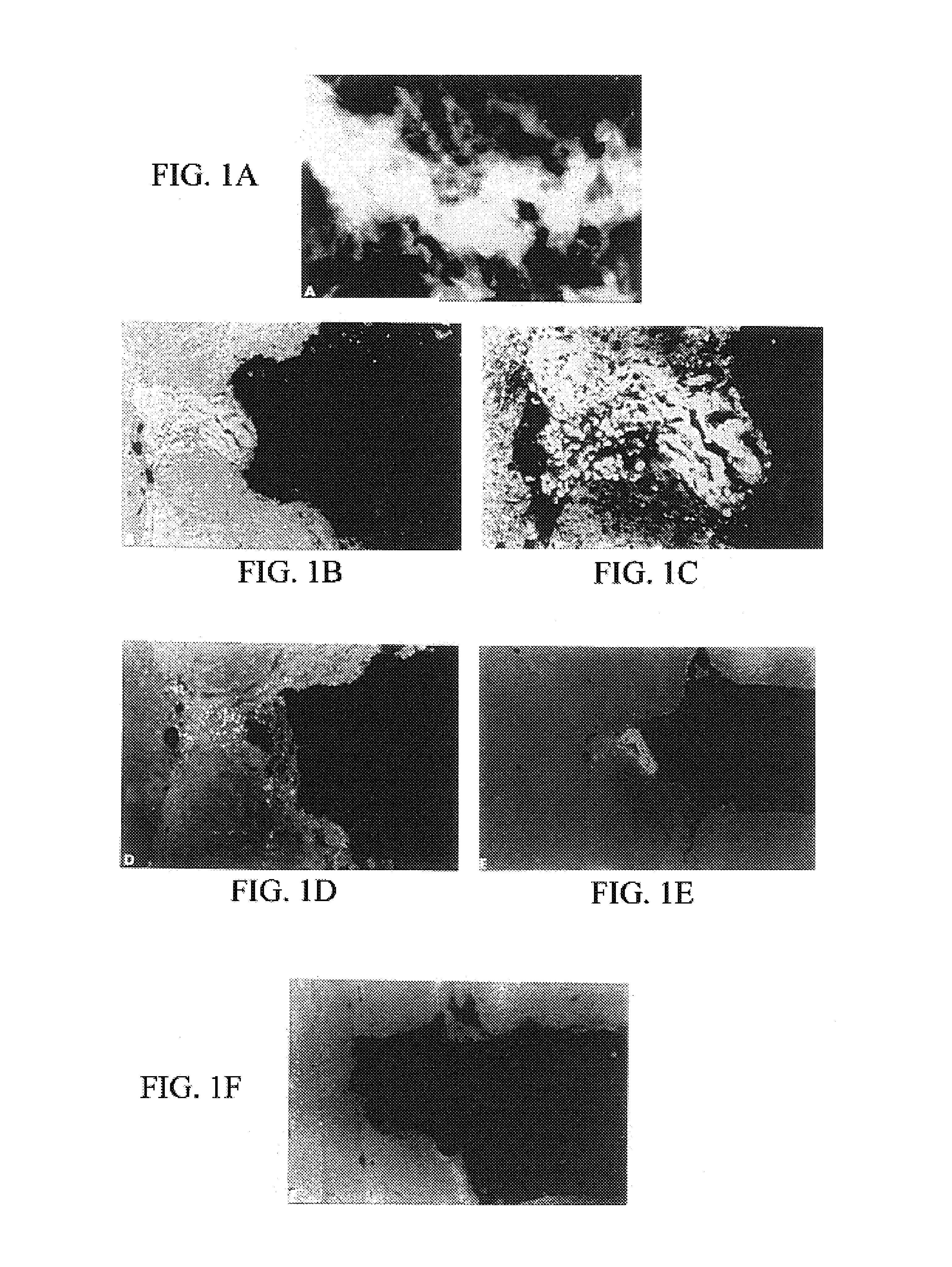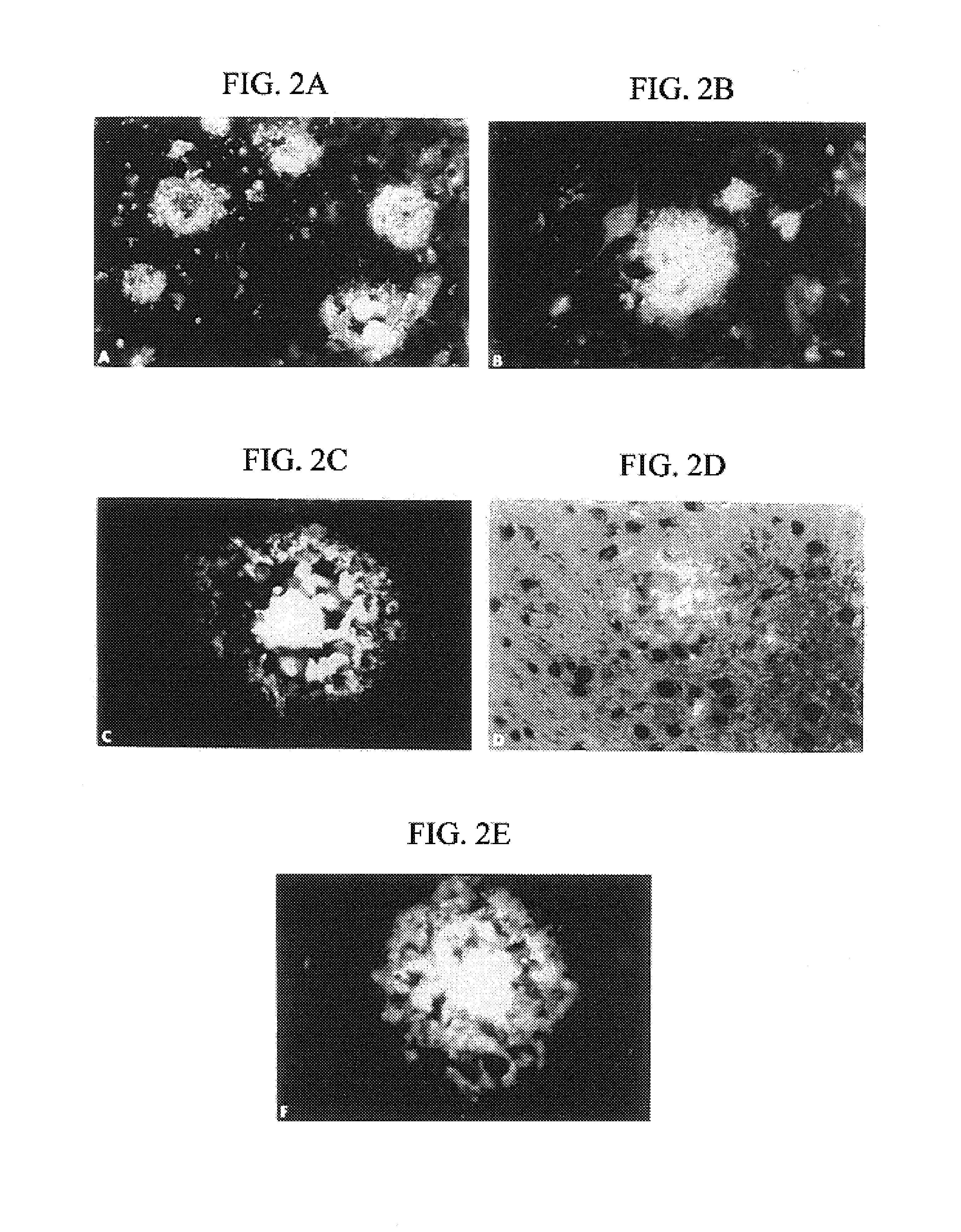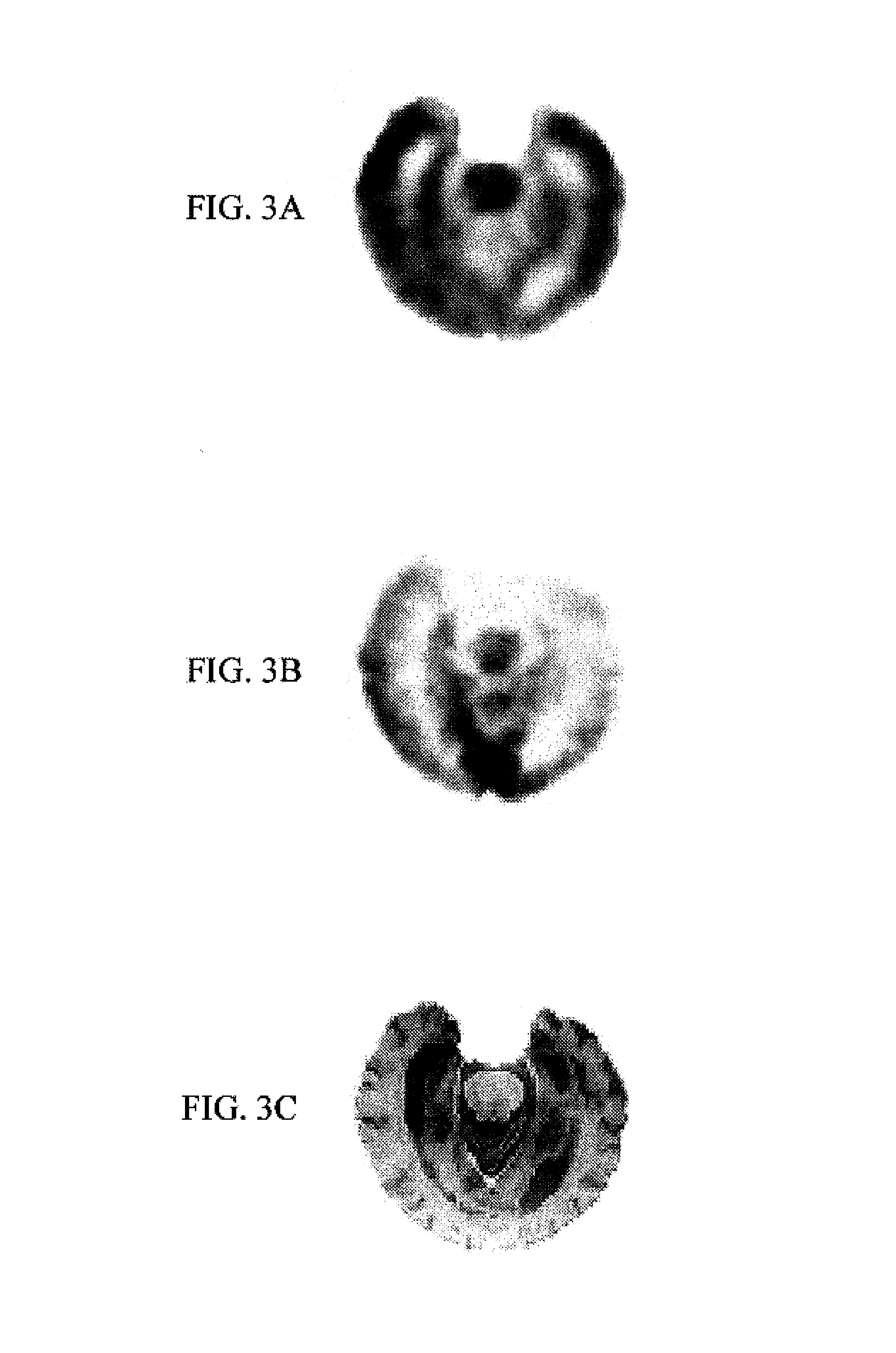Compositions for labeling beta-amyloid plaques and neurofibrillary tangles
a beta-amyloid plaque and neurofibrillary tangle technology, applied in the field of compositions for labeling beta-amyloid plaques and neurofibrillary tangles, can solve the problems of lack of hydrophobicity, complex amyloid plaques, and current techniques for detecting amyloid deposits and/or nfts require postmortem or biopsy analysis,
- Summary
- Abstract
- Description
- Claims
- Application Information
AI Technical Summary
Benefits of technology
Problems solved by technology
Method used
Image
Examples
example 1
[0051]The following compositions according to the invention were prepared. NMR spectra were obtained on Bruker AM 360 WB or DPX 300 Spectrometers. 1H chemical shifts are reported in ppm downfield from TMS as an internal standard. 19F chemical shifts are reported relative to external fluorotrichloromethane. Deuteriochloroform was used as the solvent unless stated otherwise. Melting points were determined on an Electrothermal Melting Point Apparatus and are uncorrected. Elemental analyses were performed by Galbraith Laboratories, Inc., Knoxyille, Tenn. or Ms. Metka Kastelic at the Faculty of Chemistry and Chemical Technology, University of Ljubljana. Radial chromatography was performed on Chromatotron (Harrison Research, 840 Moana Court, Palo Alto, Calif. 94306). The rotors were prepared as recommended by Harrison Research using E. Merck Silica Gel (Cat. No. 7749-3). HPLC was performed on an Alltech Econosil C-18 5 μm, 4.6×250 mm column using a 40:60:2 mix of water:acetonitrile:trieth...
example 1 (
Example 1(f)
Preparation of 2-(1.1-dicyanopropen-2-yl)-6-(2-[18F]-fluoroethyl)-methylamino)-naphthalene ([F-18]FDDNP)
[0082]
[0083]A mixture of 4.15 g (55.5 mmol) NaHSO3, 8 m L of water, 0.78 g (4.19 mmol) of 1-(6-hydroxy-2-naphthyl)-1-ethanone (prepared as described in Example 1(b)), and 8 mL of 2-methylaminoethanol was heated and stirred in a steel bomb at 140° C. for 28 hours. After cooling, the mixture was distributed between ethyl acetate and water (500 mL and 200 mL, respectively). The organic layer was dried and evaporated to leave raw 1-(6-(2-hydroxyethyl-methylamino)-2-naphthyl)-1-ethanone (0.749 g, 73%) of which was further purified by radial chromatography (4 mm SiO2, CH2Cl2).
[0084]To a solution of 201 mg (0.83 mmol) of 1-(6-2-hydroxyethyl-methylamino-2-naphthyl)-1-ethanone in pyridine (6 mL), malononitrile (236 mg, 3.6 mmol) was added and the mixture was heated at 95° C. for 24 hours. The solvent was removed in vacuo, and the residue was chromatographed by radial chromatogr...
example 2
[0087]Detection and labeling of β-amyloid plaques in vitro and in vivo, using brain tissue sections and rat brains, were conducted using the following procedures.
[0088]A 2.1 mg / mL DDNP stock solution was prepared, which was adjusted to 8 mM in 100% ethanol. A DDNP working solution was prepared by diluting the stock solution with distilled water in a ratio of 1:100-1000 (stock solution:distilled water).
[0089]β-amyloid 250 μM (1.25 mg / mL in distilled water) was aggregated at 37° C. for 48 hours. 5 μL were smeared on slides, air-dried and then rehydrated with distilled water. Alternatively, Aβ-positive brain tissue sections were rehydrated with distilled water. DDNP working solution was applied to each slide for 30 minutes at room temperature. The slides were washed three times for five minutes with distilled water. The slides were coverslipped with fluorescent protectant mounding media (Vectashield™, available Vector Labs., Burlingame, Calif.) and observed under a fluorescence microsc...
PUM
| Property | Measurement | Unit |
|---|---|---|
| Capacitance | aaaaa | aaaaa |
| Composition | aaaaa | aaaaa |
Abstract
Description
Claims
Application Information
 Login to View More
Login to View More - R&D
- Intellectual Property
- Life Sciences
- Materials
- Tech Scout
- Unparalleled Data Quality
- Higher Quality Content
- 60% Fewer Hallucinations
Browse by: Latest US Patents, China's latest patents, Technical Efficacy Thesaurus, Application Domain, Technology Topic, Popular Technical Reports.
© 2025 PatSnap. All rights reserved.Legal|Privacy policy|Modern Slavery Act Transparency Statement|Sitemap|About US| Contact US: help@patsnap.com



